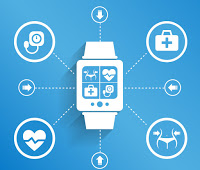This is a joint post with Denizhan Duran.
Clinton to GH community – Science and evidence must continue to guide out work.
This is a joint post with Denizhan Duran.
Clinton to GH community – Science and evidence must continue to guide out work.
Around this time last year, world leaders called for “the beginning of the end of AIDS” and an “AIDS-free generation”, and committed to reaching the ambitious disease-specific targets for HIV/AIDS: the virtual elimination of mother-to-child transmission; 15 million people on treatment and a reduction in new adult and adolescent HIV infections — all by a rapidly approaching 2015. And this year, US Secretary of State Hillary Clinton recommitted to these ambitious goals in the release of the PEPFAR Blueprint, saying “An AIDS-free generation is not just a rallying cry — it is a goal that is within our reach”. While the overarching World AIDS Day message remains clear – we have made tremendous progress thus far, and there is still a long way to go in the fight against AIDS – one question remains: is this really the beginning of the end of AIDS?
To answer these questions, we have to define what the “end” is. A recent report by the ONE Campaign, titled “The Beginning of the End? Tracking Global Commitments on AIDS,” highlights that we are off-track to meet the 2015 goals unless commitments by countries are scaled up tremendously. The report defines the “beginning of the end” as the point where the number of people newly added to treatment surpasses the number of people newly infected with AIDS. On the other hand, our colleague Mead Over would suggest aiming instead for the point when the number of new infections falls below the number of deaths so that the number of people living with AIDS, and the associated cost and dependency, stops growing – an objective he calls the AIDS transition.
But by either definition, we haven’t yet reached the beginning of the end. There are still 7 million eligible people who don’t receive treatment, 2.5 million new infections every year, and a $7 billion funding gap. And to reach the 2015 goals, 140,000 additional people have to be added to treatment and new HIV infections will have to decrease by 200,000 annually for the next three years (see figure below from the ONE Report).
This is not to say there is no progress. The latest UNAIDS report shows that for the first time, a majority of people eligible for antiretroviral therapy (8 million) are receiving it, and in 25 low- and middle-income countries HIV infections have declined by 50 percent in the past decade, resulting in 700,000 fewer new infections. These declines were achieved in part due to increased commitments by low- and middle-income country governments — domestic investments rose from $4 billion in 2005 to $9 billion in 2011 and now make up over half of the total funds against AIDS.
So, how do we capitalize on these gains and truly reach the beginning of the end?
The ONE report outlines three areas critical to achieving maximum impact: eliminating mother-to-child transmission (PMTCT), ensuring access to treatment for 15 million individuals, and reducing new HIV infections to 1.1 million annually, by 2015. In order to reach these targets, the report highlights strengthened health systems as the key to addressing PMTCT, scaling up the pace of initiating treatment, and increasing focus on effective interventions. Combination prevention strategies, for example, have proven to be effective, but certain components such as circumcision are not scaled up in many settings.
Of course, all of this is largely contingent upon one input: money. The ONE report shows how much bilateral and multilateral donors have committed thus far to the fight against AIDS, and concludes that all must ramp up their spending until 2015 – surely a tough message to convey in today’s fiscal climate. ONE recommends that both traditional and new actors must scale up their contributions to fighting HIV/AIDS, and maximize their impact through accountable planning and reporting.
While more money is important, it is not enough. We must increase the value for money of existing investments and leverage more impact for each dollar spent. If global health funders coordinate to increase their commitments to proven interventions, and ensure their funds go to where they can leverage the highest impact, we might really reach the beginning of the end of AIDS by 2015 and have the data to prove it.









